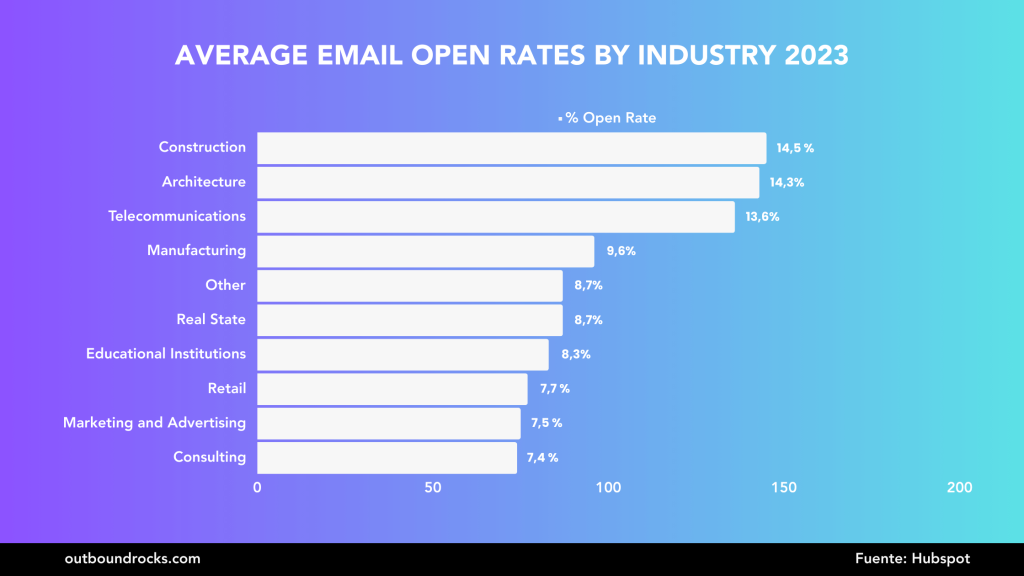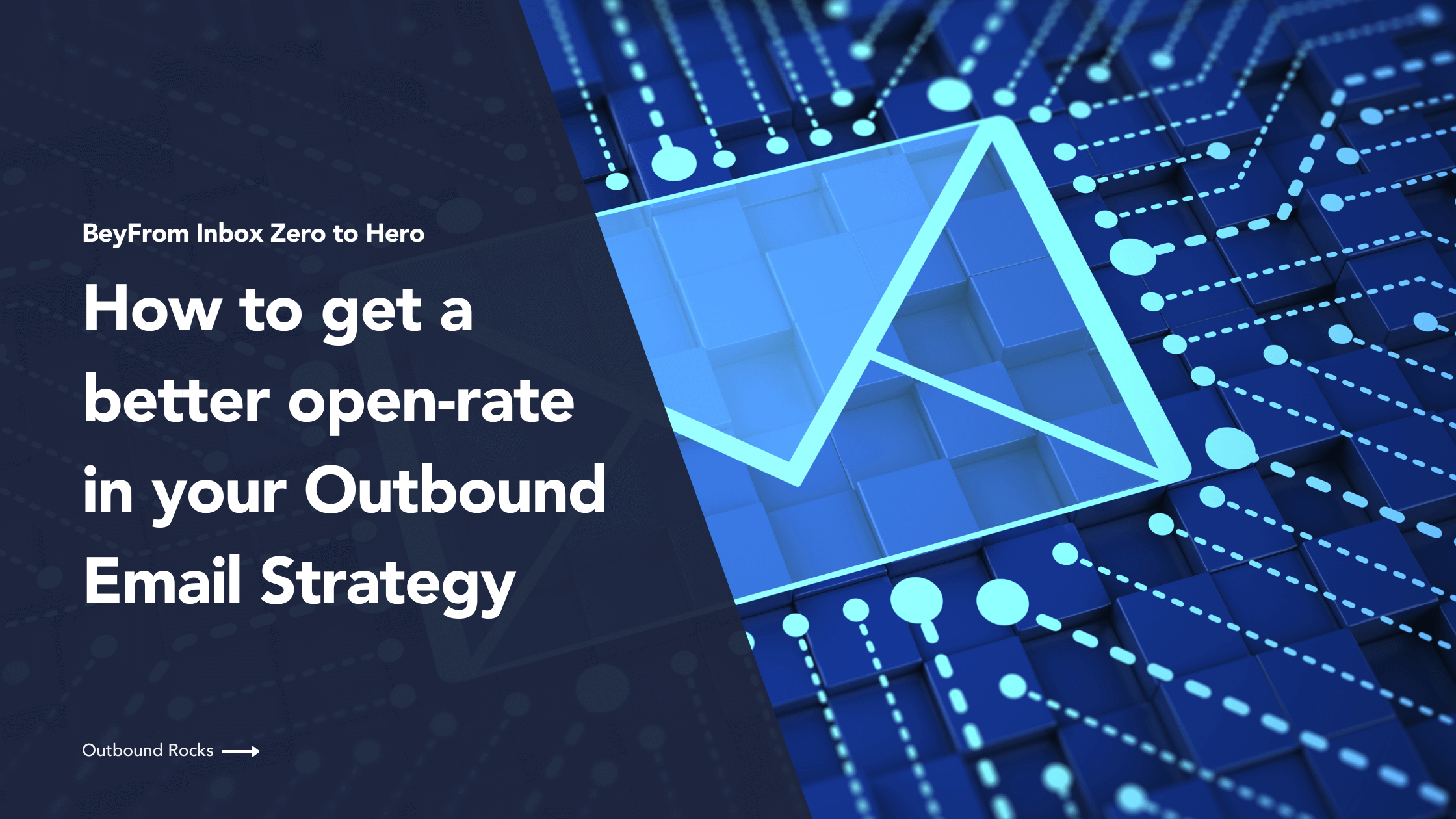Have you ever wondered what separates an opened email from a languishing one?
It’s not just luck, my friend. It’s understanding the mind of an inbox warrior and using psychological levers to make your message irresistible.
In this article, we’ll learn how to craft headlines that pique curiosity, personalize your emails, and segment your email list.
Prepare to become an inbox master, where every open is a testament to your email mastery!
TABLE OF CONTENTS
– What is email open rate?
– How to skyrocket your Outbound Email Open Strategy
– 1) Use a clear and concise subject line
– 2) Personalize your emails
– 3) Optimize your sender name and email address
– 4) Segment your email list
– 5) Test and optimize your emails
– Conclusions
What is email open rate?
This metric indicates the percentage of recipients who opened a specific email campaign out of the total number of recipients who received it.
Simply put, it tells you how many people actually saw your email instead of it sitting unopened in their inbox.
For example, if you sent an email campaign to 100 people and 25 opened it, your open rate would be 25%.
According to a Hubspot report, open rate (31%) is one of the top two metrics marketers track for the emails they send. The other metric is click-through rate (34%).
How to skyrocket your Outbound Email Open Strategy
If you’re using outbound email marketing as part of your business strategy, you’ll want to ensure that your emails are being opened and read by the recipient.
Here are a few tips to help you improve the open rate of your outbound emails:
1. Use a clear and concise subject line
The subject line is the first thing that the recipient sees, so it’s important to make it compelling and relevant to the content of your email. Avoid using spam words or phrases, and keep the subject line to 50 characters or less.
Your subject line is the first and often only impression you make on a potential reader. It’s like a tiny billboard vying for attention in a crowded inbox.
To truly maximize your open rates, forget generic greetings and spammy tactics. Instead, embrace clarity, conciseness and relevance like a digital ninja.
Here are a few examples to get you started:
- Intrigue: 3 Marketing Secrets They Don’t Want You to Know
- Specificity: [Free Webinar] Increase Your Leads 20% in 30 Days with Email Automation
- Personalization: [First Name], your feedback: Help shape the future of [product/service].
2. Personalize your emails
In a world of generic mass emails, personalized messages stand out like diamonds in a coal mine.
Why personalize? It’s simple: people care about themselves!
When you use their name, reference their interests, and address their specific needs, your email instantly becomes more relevant and engaging.
3. Optimize your sender name and email address
The sender name and email address are also important for improving the open rate of your emails.
Use a sender name that is familiar to the recipient and an email address that is professional and easy to remember.
4. Segment your email list
By dividing your email list into smaller groups based on common characteristics like demographics, interests, purchase history or site behavior, you can:
- Create highly relevant emails: each segment receives content that speaks directly to their needs and pain points, making them feel valued and understood.
- Increase engagement: tailored messages are more likely to resonate with recipients, resulting in higher open rates, click-throughs and conversions.
- Refine your strategy: analyze the performance of each segment to determine what resonates and what needs to be tweaked.
Examples:
- Segment by purchase history: send “New Arrivals” emails to recent buyers and “Repurchase Reminder” emails to those who haven’t bought in a while.
- Segment by interests: offer fitness tips to gym enthusiasts and travel deals to adventure seekers.
- Segment by website behavior: send abandoned cart reminders to browsing shoppers and follow-up information to those who downloaded resources.
5. Test and optimize your emails
Think of your email content as a delicious recipe. But even the best dishes can benefit from a little experimentation. That’s where A/B testing comes in.
By testing different elements of your emails, you can discover what really tickles your audience’s taste buds and maximize your open rates.
For example:
- Test two subject lines: See if a pithy headline or a question sparks more curiosity.
- Compare two sender names: Try your company name versus a familiar person to see which resonates better.
- Experiment with call-to-action buttons: Test a bold button with specific text versus a more subtle link to see which drives more clicks

Conclusions
By following these tips, you can improve the open rate of your outbound emails and increase the chances that your message will be seen and acted upon.
To find out how to do all of this on a larger scale, visit outboundrocks.com, fill out the form and try Outbound Rocks for free.
